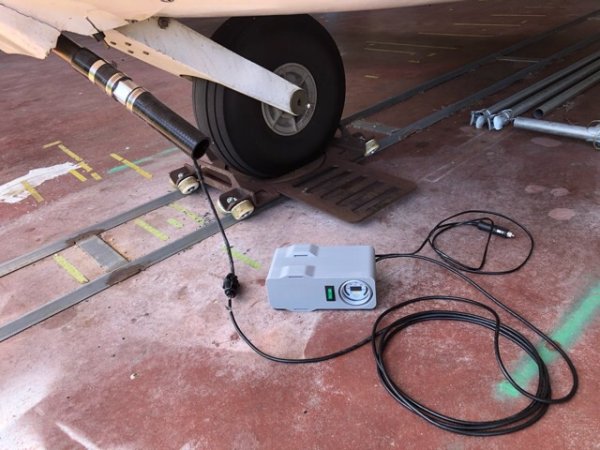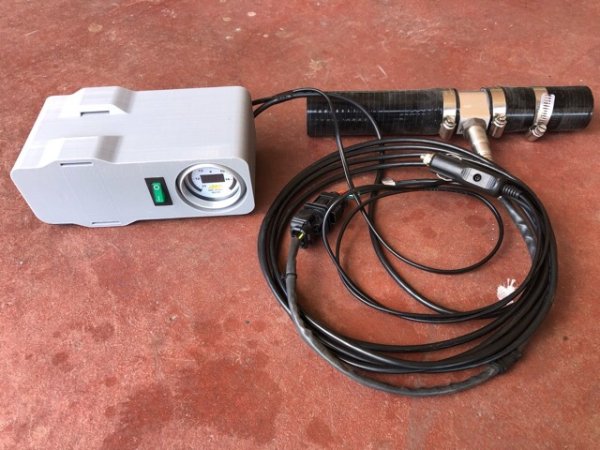
Area-51
-
Posts
449 -
Joined
-
Last visited
-
Days Won
8
Content Type
Profiles
Forums
Gallery
Downloads
Blogs
Events
Store
Aircraft
Resources
Tutorials
Articles
Classifieds
Movies
Books
Community Map
Quizzes
Posts posted by Area-51
-
-
If the supplier does not provide specifications for Micron filtration size and internal valves employed keep searching.
-
Thanks, that's great, not offended by your response skippy; provided reasons why those clamps you recommended are obsolete based upon nearly 40 years working in the field and what the end results are, but in the right application they are fantastic; use them and enjoy...
Personally I wouldn't use any replacement components on my own engines unless they match or exceed OEM manufacturer standards... couldn't care less if it was rotax or any other superduper producer, i'm quality and standards driven, not price driven.
People need to accept responsibility to either invest in themselves and do the research first, or just go get their stuff from floods and be happy.
Not everyone has the same level of experience and abilities; not afraid to say something is crap if it is proven to be crap.
Conditions are great this morning, taking my hoses and clamps up into the sky!
-
5 hours ago, skippydiesel said:
Check out my input to this Form - Aircraft general Discussion -Constant Pressure Spring Clamp
The person asking the question requires "Oetika" type clamps.
CLR range of Uniclamps are reusable, simple to tighten and release without slicing your hands open on ears and tags, and maintain constant pressure; set and forget.
All those style clamps you have directed readers to are superseded, insufficient, and great as a last resort or where the task is not critical such as washing machines, garden hoses, and Morris Minors.
-
 1
1
-
-
Yes, planning well ahead before what is geopolitically inevitable; this will pan out very well for India.
-
DCI, Diver Consolidated Industries, in Victoria for all OE ISO standard thermal and acoustic protectives.
Uniclamp Australia, Ron 1300 027 886 for NORMA style hose clamps.
Buy complete kit with pliers and additional packs of sizes marked in pics if undertaking complete 5 year hose change. You will need CLR-922235 23.0mm-24.5mm size clamps as well.
OIL Hoses - ENZED HYDRAULICS
Parker 7212 Jiffy Push-On 13mm ID
Parker 7212 Jiffy Push-On 16mm ID
Parker Push-Lok Plus 836-12-BLK
FUEL Hoses - REPCO
Gates Barricade 4219BF Greenshield
4219-5653, 3/8" ID
-
 1
1
-
-
-
The other important item to manage and remain aware of is your "stick stall position"... Don't become a statistic by loosing situational awareness trying to force the aircraft into a tight banked turn on final (or turning xwind on departure) in order to line things up with the runway; let it go and go around... know your aircraft's performance limits.
A discussion to have with an experienced aerobatics instructor or military trained pilot.
-
 1
1
-
-
Your instructor has probably already covered this while nudging your new pilot skills into shape.
In aviation the best skill you can develop is the ability to recognise your own $&:@ups and know how to affectively correct them immediately before they lead to a stack of multiple $(&@ups; this comes with experience, additional advanced training, and practice. This is what will distinguish "you" as a "proficient" pilot in command.
if you've turned Final on approach and you find, or feel the aircraft (because the wind may shift and you are suddenly flying final on downwind) is not setup as expected "fix it". If fixing it is not a confident option "go around" and have another go.
I had the valuable experience early into going solo of the wind shifting direction after checking the windsock on downwind; I ended up flying final downwind with 15kt tail wind without knowing. The aircraft felt loose and weird; scanning my IAS and flight instruments was my first go to; coming over the fence it felt the aircraft was too fast; again i checked my IAS; my throttle management workload was greatly increased; I elected to go around and the situation with the wind and windsock repeated; second approach i greased it on all be it with a much faster ground speed than expected... my instructor was watching it all on the ground and able to discern i had the situation managed and was holding off getting on the radio to ask "why are you landing downwind"... truth be told i had no idea what was going on in the moment, i just focused on managing my airspeed and maintaining my lineup... that was my first experience landing downwind.
Why am i sharing this experience? You may not always know you have $&@(ed up, but something may feel weird... Just "maintain airspeed", then "maintain centerline"... if you are unable to manage either, relax, breath, go around and try again, and go around again until you got it all sorted...
-
The end result will be determined by quality of your comm's and actual individual hearing... with sufficient volume control they will work fine in an ultralight... The headsets themselves are great; its the external variables that affect their op' performance... they rarely come up for user resale so its an indication people are generally happy with them.
-
 1
1
-
-
Have tried both TSO and non TSO versions... the audio quality is superb.
They are non active passive noise cancelling.
in an airliner cockpit they will work great... in a rotax 912 cockpit i did not find their audio performance sufficient at full power; in cruise they were ok.
-
 1
1
-
-
ASIC is only required at Security Airfields.... generally if there is a fence all around the field and coded gate entry in/out of airside it will be ASIC Secured.
-
 1
1
-
-
Mercy flights are legal, and the aircraft may require a HF radio for a start due to "remote" area; and the list will grow by around midday tomorrow...
-
There are some great comments from both sides here regarding these awareness presentation videos...
Preservation, loss, and gain of energy... yes that happens... the fuel goes in the front and waste goes out the rear... sounds pretty normal; what bit of the cow are we talking about here? Who cares, its all energy, moves all over the shop constantly, "just fly the plane"...
"When does a stall finish and spin begin?" ... that would be when the words "oh $&@?" are spoken... not joking...
Two dimensional expectations attitudes and thinking will eventually get you killed in a three dimensional playing field... And there lies the rosetta stone of being an aviator.
Which way is up? - Irrelevant question for flying aircraft.
Spending dollars to produce videos to bring awareness toward LOC... (an infomercial) hmmm... how about this instead - "all individuals wishing to successfully complete their basic training to solo level are required to complete three hours of practical LOC training with an LOC qualified instructor" - because everybody will watch the videos and sign up on their own won't they??To RaAus' credit they do suggest go and get specialist LOC training - Risk responsibility occurrence mitigated.
Will LOC fatalities continue to occur? Probably.
Will EFATO situations continue to occur? Probably.
Will CFIT incidents continue to occur? Probably
Will in flight mechanical failures continue to occur? Probably
What percentage difference might these awareness videos actually make... 0.1% uptake of total viewer audience.
PRACTICE PRACTICE PRACTICE
Don't forget to enjoy it...
-
 2
2
-
 1
1
-
-
Did the building explode and fall down?
-
 1
1
-
-
Looks very fart proof...
-
-
"It's one big club, and you ain't in it!!!"....
-
So from what is being written here; its ok if the US and UK use Rotax engines in drones but not ok when any "other" administration does?? Very confused, wouldn't these engines still produce the same performance regardless of end user? Cruise missiles use a multistage Williams turbo fan; that would work really well in an ultralight; never see these disposable surplus units for sale on fleabay...
-
 2
2
-
-
9 hours ago, JG3 said:
Rylstone is a residential airpark, any more details??
I'm familiar with Boonah but don't know of any accommodation other than the hangar floor....
Boonah has bunkhouse and facilities at the gliding club
-
 1
1
-
 1
1
-
-
Warkworth Gliding Club 15min south of Scone has bunkhouses and good facilities
-
 1
1
-
-
Entering frequency area...
BS on carbi's being problematic over efi... CV carbi's are the closest thing to mechanical fuel injection available; which i would choose over efi any hour of the day for reliability and safety... set and forget capability for any technician that has the hands on track experience is a non contested conversation. An SU carbi will not fail once tuned; the electric Lucas diaphragm pump will, but the carbi won't ever
-
 1
1
-
 1
1
-
-
Awesome!! Very different kind of flying to GA... just remember you got stuff all inertia to keep you moving when the power comes off... have fun!
-
 1
1
-
-
Anything that gets air moving over heated components helps; keeping the fuel cool and moving through fuel lines helps the most. If vapor lock continues to be experienced during taxi/flight op's then you either have a fuel quality issue, line pressure issue, or a heat soak/source issue. The situation doesn't get any more simple than that.
Departing frequency area...
-
Setting the throttle to wide open (* this will flood engines with constant pressure needle slide carburettors and certain mechanical injection) on CV carburettors allows any fuel bubbling up out of heat soaked carburettors to enter the inlet manifold and remain in situ in vaporised form ready for when cranking commences. The floats will become operational again as soon as fresh fuel reaches the float bowls preventing flooding (this has nothing to do with the subject or affect of "heavy floats")
If the carburettors are not suffering heat soak then no fuel will enter the inlet manifold however fresh cooler temperature fuel will still cycle through the pump and supply lines flushing out any existing vapor prior to cranking.
Pulling choke to mitigate vapor lock will have no affect on Bing64 but will have marginal affect on SU and Stromberg CV carburettors.
Position of return line restrictor can also affect ability to arrest vapor lock; too far away downline from the carburettors will prevent vapor quickly exiting back to lower pressure environment; so placing it back at the fuel tank is not a good idea.
Return line exit position is also critical; it needs to be far away from any heat source to allow sufficient time for fuel to cool down. It's also critical to ensure that where ever it is returning to cannot overfill and cause continued pumping of fuel out through fuel vents as the 912's pump will happily empty a 40L tank dry in about 15 minutes.
-
 1
1
-









Radial motors - hydraulically locked
in Engines and Props
Posted
Rotax 9XX are rolled over at the beginning of each new day for two reasons; 1. To allow compression pressure to push past the rings and push oil out of the crankcase back into the reservoir for correct level assessment, 2. Primary function though is to ensure hydraulic lifters are fully primed with oil prior to startup, expelling any air that may of somehow settled after last shut down.
Engines started without a daily roll over have been known to suffer early valve train failure.